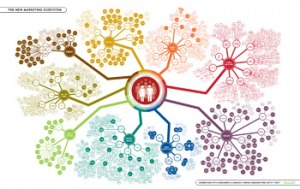 The way that we have done business in the past and the way it is now have undergone a transformation, a digital revolution indeed. A few years ago, Facebook was hardly known; LinkedIn’s presence was not felt. But today digital is all over the place. With marketing undergoing major transformation, and will continue to evolve as we move forward, as a CEO or a CMO, have you utilized the ‘Power of Digital Marketing’ in your business?
The way that we have done business in the past and the way it is now have undergone a transformation, a digital revolution indeed. A few years ago, Facebook was hardly known; LinkedIn’s presence was not felt. But today digital is all over the place. With marketing undergoing major transformation, and will continue to evolve as we move forward, as a CEO or a CMO, have you utilized the ‘Power of Digital Marketing’ in your business?
This article could help uncover areas that your businesses should explore to make your company stand out, improve upon your brand image, reach out to more customers and building a solid foundation to your business.
Business buyer is today a lot sophisticated, and they have a need to buy. They now have plethora of information, lot of data to analyze, and more so, their purchasing decisions are influenced by the complexity involved in the buying process.
The first step is to define your Digital Marketing Strategy.
- What are we trying to sell?
- Who is the target audience?
- What is the message that we would like to share with the audience?
- What are your marketing objectives and how do you plan to track the ROI through these efforts?
It is essential that the management and marketing team addresses the above questions so as to have clarity and objectivity. The message needs to be consistent across various channels. Hence integrated messaging is the key and it should flow across both ways, both from your company and from your audience.
There were days when the buyer relied heavily on information from a manufacturer or a service provider, in order to buy. Today the customer has more than enough information at their finger tips. So treat the ‘Data like a King’, and ‘Content like a Queen’. The crux is that the context should be relevant to the customer. Proper use of information and analytics will help weave a perfect story which your audience wants to see or know about.
Another disruption in marketing has come up in the recent past, which is the ‘Mobility’. Organizations need to have a mobile strategy in place. Web and mobile strategies must meet, and it is becoming mandatory to have a mobile site that renders the website well across desktops/laptops, smartphones, tablets and e-readers.
Digital marketing is measurable, customizable, and can be executed effectively at a lower cost. It has various components and each of it needs to have a specific objective and results tracked. It starts with the website that should have a good design (good UI), clear messaging, ease of navigation and speed. SEO, SEM and Social media are some of the components one needs to pay close attention to.
SEO: Search Engine Optimization helps to optimize your website. It also increases visibility of your content through proper usage of keywords. It helps in ranking up your site based on your keywords, its density, etc. This is organic and cost effective, but takes time for results to be seen.
SEM: Search Engine Marketing is ad based where you bid for keywords. You can play with your budgets but sometimes minimum bid amount can itself be higher.
Social media involves social groups, networks, blogs, videos, reviews, etc. Most popular amongst them are LinkedIn, Twitter, Facebook, Pinterest, etc.
Companies can derive significant benefits if they are able to leverage the power of Online Marketing. It can be further classified as ‘traditional’ and ‘gorilla’ marketing.
Email marketing and banner advertisements can be classified traditional where as gorilla marketing helps to generate inquiries and close sales through cost per acquisition deals, affiliate programs, CPC (cost per click), etc.
The points discussed above are just the tip of the iceberg, and the marketing team needs to include a well thought out Inbound and Outbound digital strategy.
Inbound marketing can be done through blogs, videos, social media, SEO, discussion forums, whitepaper, etc.
Outbound marketing includes email campaign, webinars, virtual conference, display ads like Google adwords, etc.
A right mix of inbound and outbound marketing is the key, when you are looking at targeting prospective buyers for your product or a service or a solution.
Customer today has multiple touch points before they make their buying decision. Hence it is essential that we provide one integrated message, across all channels of communication.
With so much of avenues to reach out to your customers, and with lots of action happening in the marketplace, be conscious to cut the noise, make yours stand out, and fish where the fishes are.
Guest Post by Shyam Sekar S, Chief Mentor & Strategist at Startup Xperts

